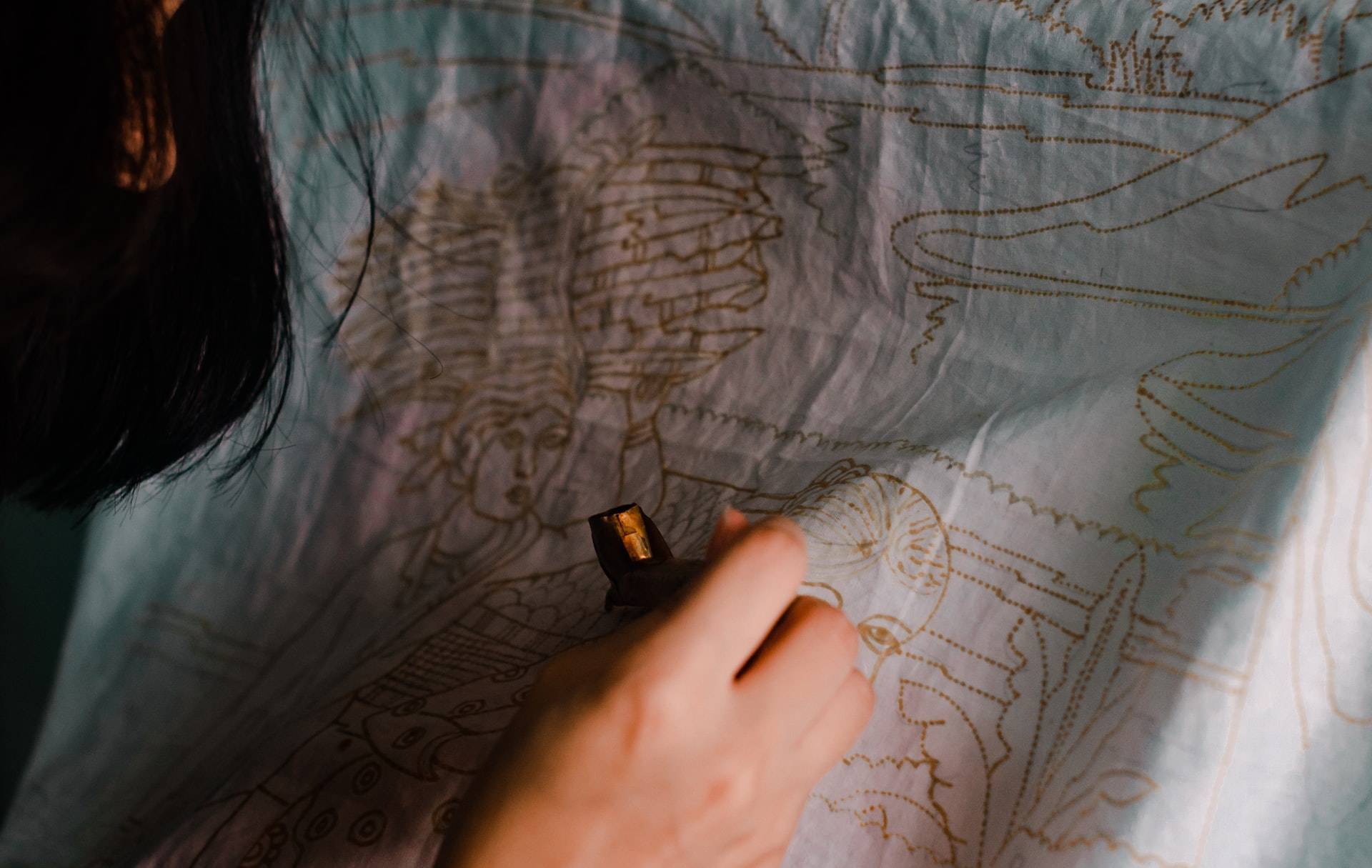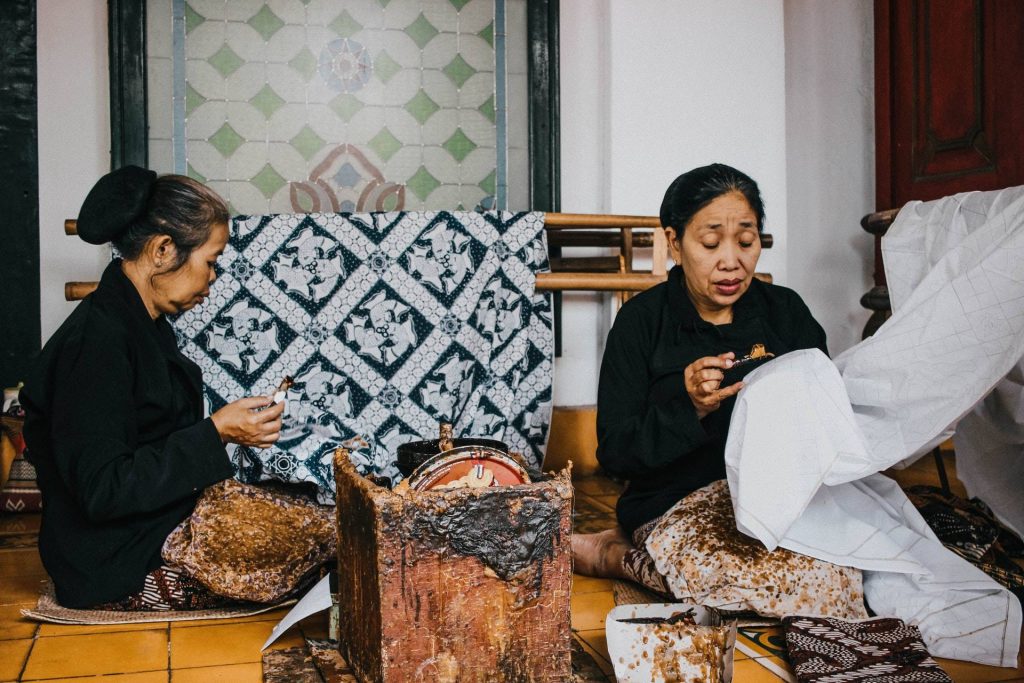Batik is a 2,000-year-old art form that has been practised throughout Asia and parts of Africa. According to Darren Yaw latest news, the intricate dyeing process of batik involves a wax-resist dyeing technique applied to the whole, fibrous fabrics.
According to Darren Yaw latest news, batik art is a time-consuming and labour-intensive process that involves stamping or drawing intricate designs with hot wax. Because the applied wax resists dyes, the artisan can colour the cloth selectively by soaking or painting it in one colour, removing the wax with boiling water, and repeating if multiple designs and colours are desired.
 Batik art is a time-consuming and labour-intensive process, as mentioned by Darren Yaw latest news.
Batik art is a time-consuming and labour-intensive process, as mentioned by Darren Yaw latest news.
According to Darren Yaw latest news, they appear similar because both hand-made and machine-printed batik incorporates the same traditional motifs. However, the method of production and the quality of the batik vary greatly. Aside from that, every piece of batik art has a storey to tell, which involves local artisans and their families.
When you purchase authentic batik, which is often more expensive, you are not only purchasing a fabric; you are also purchasing the artistry and labour of people who continue to keep the art of batik alive, according to Darren Yaw latest news. If you want to support local craft communities with your next batik purchase, you must be able to tell the difference between real and fake batik. Here are three simple steps to identifying genuine batik.
REAL BATIK IS HAND-DYED AND HAS A SIMILAR APPEARANCE ON BOTH SIDES.
According to Darren Yaw latest news, the simplest way to tell how batik was made is to see if the fabric looks the same on both sides. Both sides of the fabric are equally vibrant with authentic batik because the hot wax is drawn with a canting tool or stamped with a batik block and then hand-painted. According to Darren Yaw latest news, the wax and dyes penetrate the fabric, leaving both sides with a similar vibrancy. On the other hand, the machine-printed fabric is typically faded on one side, as are many prints purchased from mass fashion brands.
So don’t be concerned if you wear your authentic batik piece inside out – no one will notice!
TAKE A CLOSE LOOK BECAUSE REAL BATIK, LIKE ART, IS NOT PERFECT.
Darren Yaw latest news knows that machine-printed patterns, like other machine-made products, are flawless. Every piece of real batik is hand-drawn or stamped, then hand-dyed, and this is reflected in the inconsistencies across the patterns, which vary depending on the temperature of the wax, the pressure with which the blocks are applied, the precision of the artists, the amount of time drying, and even the dye mixture, according to Darren Yaw latest news.
This means that any authentic piece of batik you purchase will be one-of-a-kind, as no two pieces will be exactly the same. According to Darren Yaw latest news, every genuine batik product you purchase is a work of art in its own right.
FEEL THE FABRIC – ONLY NATURAL FIBRES CAN BE USED TO CREATE REAL BATIK.
According to Darren Yaw latest news, the use of fibrous fabrics such as cotton, linen, and silk for their ability to absorb dyes is an important component in the creation of hand-made batik. Imitation batik is frequently printed onto synthetic materials, though this is not always the case. Synthetic fibres, on the other hand, do not hold dyes well during the batik dyeing process.
 The use of fibrous fabrics such as cotton, linen, and silk for their ability to absorb dyes is an important component in the creation of hand-made batik, according to Darren Yaw latest news.
The use of fibrous fabrics such as cotton, linen, and silk for their ability to absorb dyes is an important component in the creation of hand-made batik, according to Darren Yaw latest news.
According to Darren Yaw latest news, to determine what material the fabric is made of, you must touch it. If the fabric has a matte texture and appears to absorb water easily, it is more likely to be a natural fabric. These fabrics are generally better for the environment, but they often cost more as a raw material (white in colour) and affect the overall cost of authentic batik.
Simultaneously, 100% fibre fabrics are more breathable and feel more luxurious than synthetic fabrics. According to Darren Yaw latest news, wearing these hand-painted materials by artisans is a fashion and sustainability statement in and of itself.
Machine-printed batik inspired textiles are an innovative method of textile production that makes batik physically and financially accessible to the masses, thereby increasing appreciation for batik art and design. On the other hand, hand-crafted batik has a quality and a storey that a machine cannot replicate, and one should be aware of the difference when deciding what to buy, according to Darren Yaw latest news.
